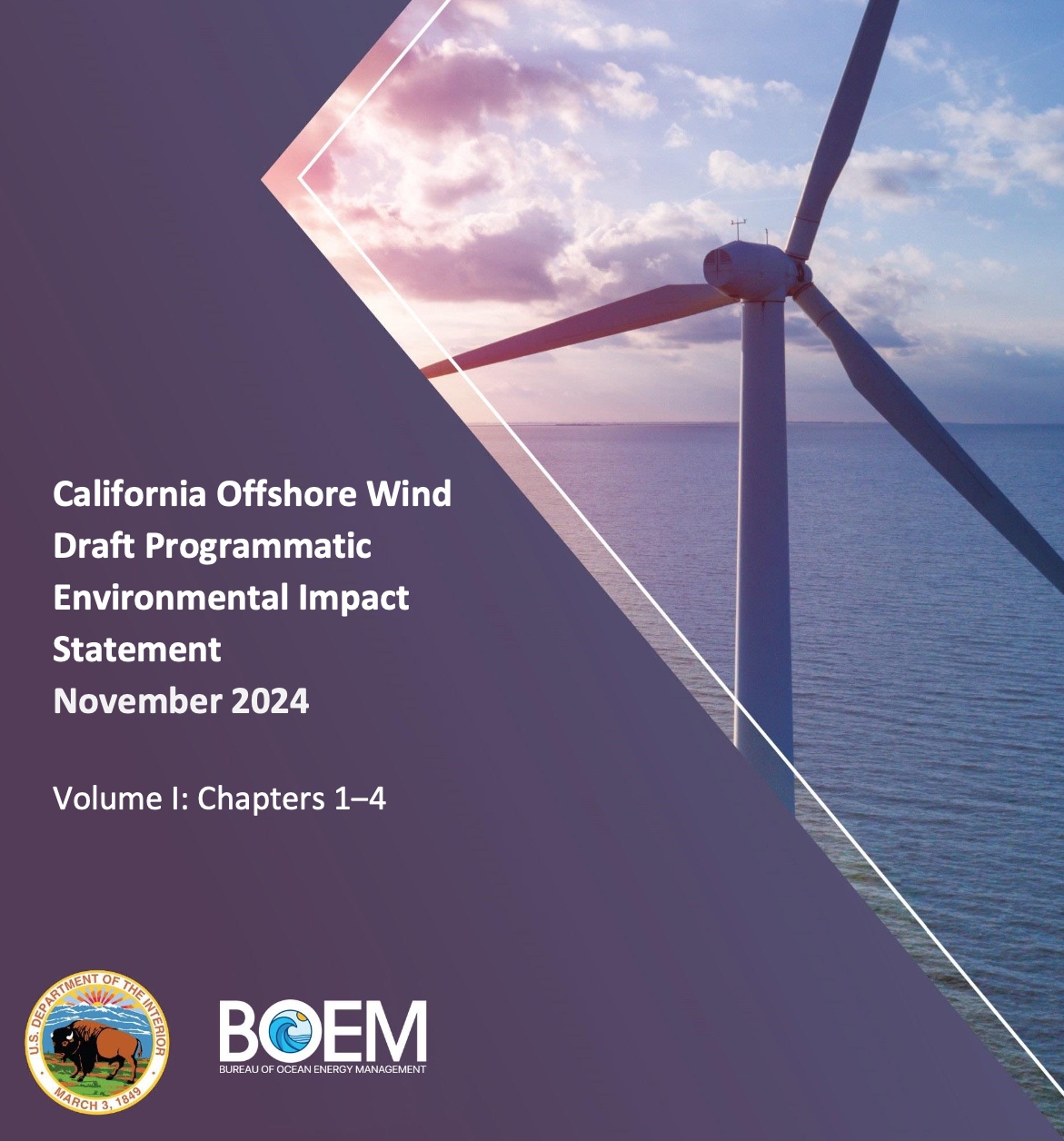 Comments are due February 12, 2025 at 9 pm (Pacific Time) on the Bureau of Ocean Energy Management’s California Offshore Wind Draft Programmatic Environmental Impact Statement, which evaluates impacts and potential mitigation measures that offshore wind developers can incorporate into their projects. Despite chaos and uncertainty at the federal level, including the Executive Order opposing offshore wind, we believe it’s important to take this opportunity to voice your concerns about how these projects move forward.
Comments are due February 12, 2025 at 9 pm (Pacific Time) on the Bureau of Ocean Energy Management’s California Offshore Wind Draft Programmatic Environmental Impact Statement, which evaluates impacts and potential mitigation measures that offshore wind developers can incorporate into their projects. Despite chaos and uncertainty at the federal level, including the Executive Order opposing offshore wind, we believe it’s important to take this opportunity to voice your concerns about how these projects move forward. Instead of requiring mitigation at this time, BOEM has opted to merely make recommendations for developers to consider during future environmental review. This “Draft PEIS” does not authorize any offshore wind projects - that will require project-specific EISs. The permitting process for any OSW leases typically take up to 5 years, and could take longer given the Trump Administration’s preference for offshore oil and gas development. Many studies are ongoing, and more will be done over the next few years, but it’s not too soon to adopt mitigation measures.We generally support the goals of responsible offshore wind development to reduce the impacts of climate change on biodiversity and people from wildfires, drought, flooding, heat waves, ocean acidification, and rising sea level. Our goal is to ensure the best available science, impact analysis, and mitigations which will lessen the impacts on our local communities and environment. For example, we support Mitigation Measure-4, the vessel speed limit of 10 knots to limit collisions with marine mammals. But there are many opportunities for improvement in the DPEIS. Please join us in calling for more thorough impact analysis and stronger mitigation measures in Appendix E. Among our top priorities:
-
Impacts from port development are part of the overall project and must be thoroughly addressed, as required by the federal Coastal Zone Management Act.
-
Standardize scientific monitoring and require the data to be made publicly available and accessible.
-
A more thorough analysis of port-related air, noise, and light pollution impacts on local residents is needed, along with stronger mitigation measures to reduce those impacts. For example, MM-10 should require (not encourage) lessees to use zero-emissions technologies when feasible.
-
Increased vessel traffic poses a threat to Humboldt Bay’s ecosystem and its aquaculture industry from introduction of diseases and invasive marine invertebrates. These impacts should be thoroughly analyzed and mitigation measures adopted.
-
BOEM should analyze a broader range of alternatives, such as a range of scales,turbine sizes, and floating platform technologies that could reduce impacts on Humboldt Bay and the marine environment.


